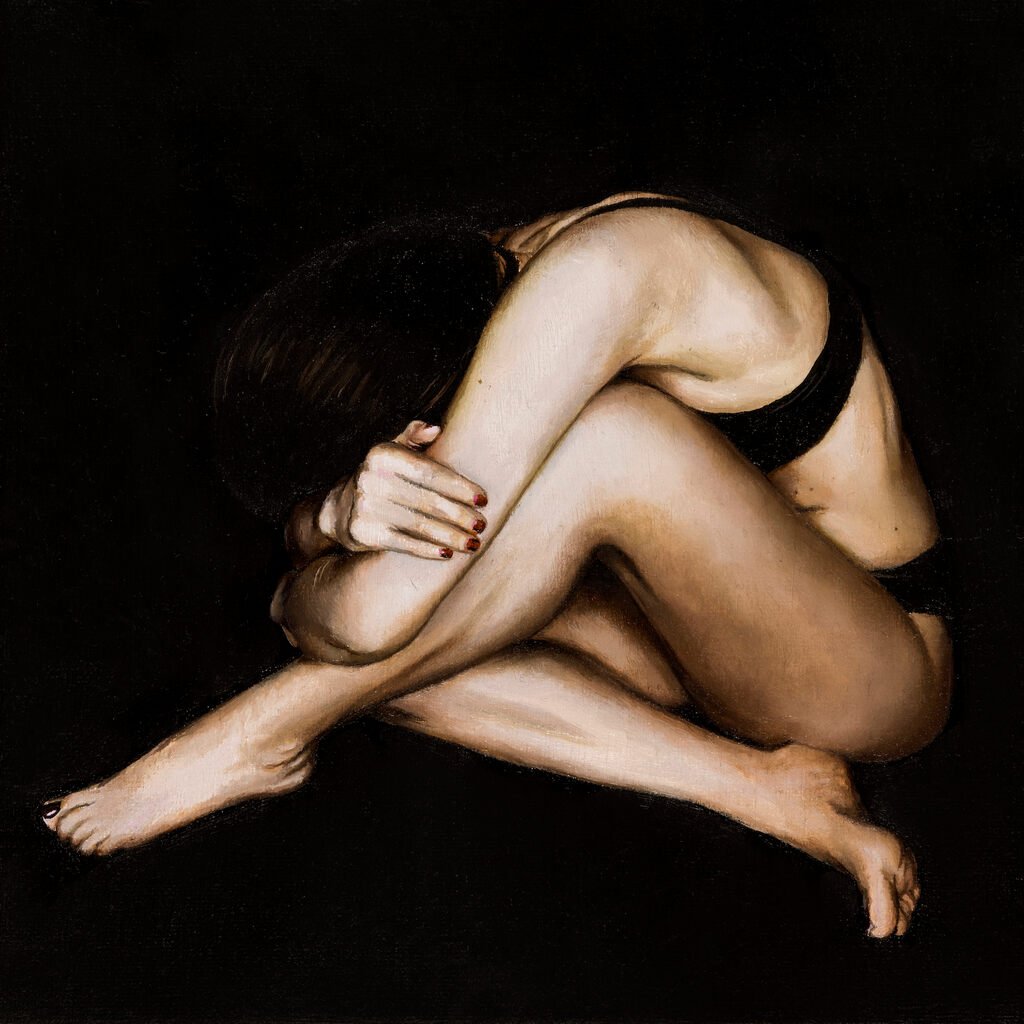Claudia Kaak
“I am a German self-taught figurative realist oil painter whose intention is to break taboo and allow emotional disorder to seep through the artwork.”
Claudia Kaak was born in 1987 in Heppenheim, Germany, where she lives and works. In 2015, she graduated from Goethe University Frankfurt (a.M.). Her first solo show was held at Galerie Pack of Patches in Jena (Germany), and her group exhibitions include shows for Art Innsbruck (Austria), Gallery Ewa Helena in Hamburg, Ludwiggalerie Schloss in Oberhausen and the Grand Salon in Bad Säckingen (Germany), RJD Gallery in New York, Zhou B Art Center in Chicago, Gormleys Fine Art in Dublin, Principle Gallery in Alexandria, Flinders Lane Gallery in Melbourne, Wasau Museum of Contemporary Art in Wasau and Museo Europeo de Arte Moderno in Barcelona. She has been a finalist for the 13th, 14th and 16th Annual ARC competition and has been awarded by the International Guild of Realism (2019) and the Grand Salon (2020). Claudia’s work has been featured in American Art Collector, PoetsArtists, MilionArt Kaleidoscope, The Guide Artists, Revista Ophelia and an online exclusive exhibition with International Guild of Realism, Arizona.
Q&A
What influenced your art style?
Artists, such as Rembrandt, Caravaggio, Géricault, and Bouguereau have influenced my art style, as well as music and movies. Most importantly, traumatic experiences of my childhood and adolescence, as well as events of my later life and my children, have influenced my style.
What role does your artwork have in society?
Art is an expression of human existence. It has an outstanding significance in society. Modern living conditions influence our health. Stress is not fundamentally negative and can even help to cope with challenges and stressful situations. However, if the stress becomes too much, it can lead to mental illnesses, such as depression or anxiety disorders, or physical illnesses in everyone.
In my paintings I want to show mental disorders, feelings in my paintings and not hide them. Hiding them, in my opinion, is not healthy for people and not good for society. With my art I have the concern to contribute to shaping a culture in which people with mental illness to get more acceptance and understanding.
What are you really trying to say with your artist statement?
My intention is to break taboos and allow emotional disorder to seep through the artwork. I want people who may have had similar experiences to know that they are not alone! There are many people who have experienced very cruel things and have to live with the symptoms every day. You don't have to hide behind a mask. You can talk about it and be honest.
What is your ultimate goal for your artwork?
I want to reach as many people as possible with my artistic work and its message. I myself am severely traumatized. I try to present my traumatic experiences and the resulting consequences in an unembellished way. It is a very serious subject and I know how alone and isolated you can feel and think you are all alone. But there is also another side of me. I also want to show hope. Moments when everything is different. Experiences that make my life worth living and that I want to pass on to my children.
Do you ever venture out of your creative process to try out new things?
In the past, I painted more expressively, focusing on facial expressions and body language, while intentionally leaving backgrounds unobtrusive so as not to distract the viewer, allowing them to focus more on the sublime content. Meanwhile, I paint in more detail and often incorporate the background into my work, building another psychological layer, so to speak.
When did you first sell an artwork to a collector? What is the story?
At university I met a great, warm-hearted lecturer. She was one of the few people in my life who was positive and stood up for me. For example, when we went to exhibitions, she bought me the catalog for them, gave me canvases and other materials, and encouraged me a lot in terms of my artistic career and my image, even though I was actually studying to be a teacher. She bought my first painting during my exam exhibition and told a friend about me, who also bought a painting from me.


